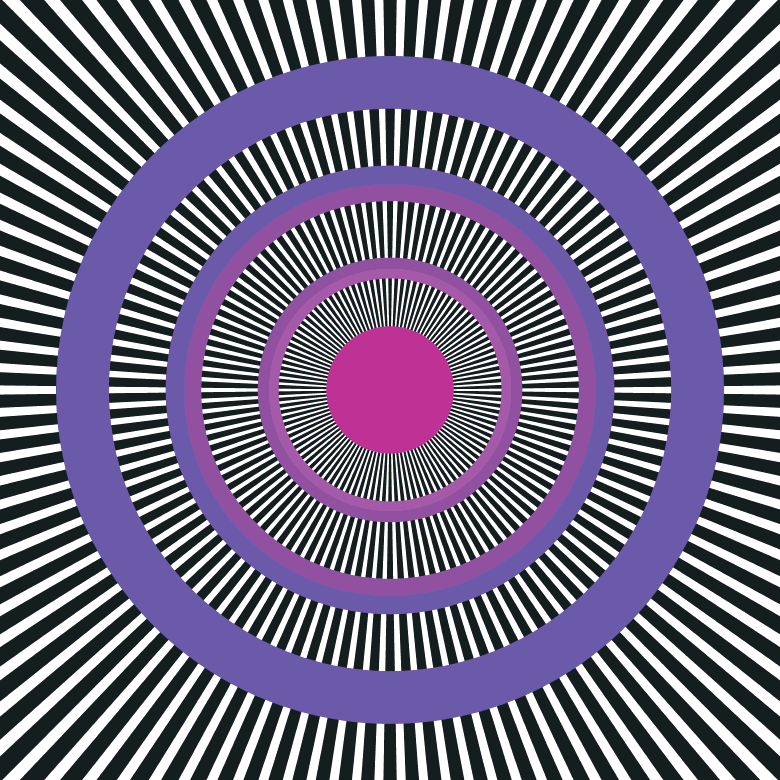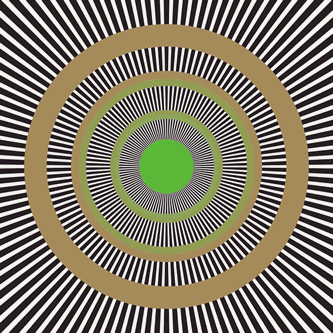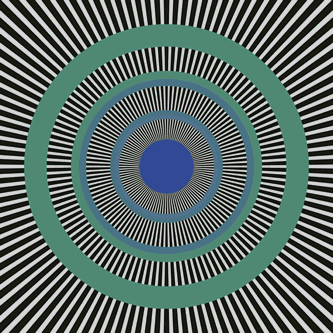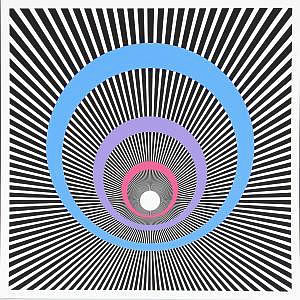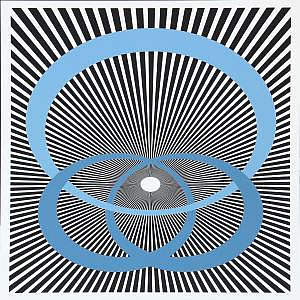An
Enigma solved
Scientists determined why we see illusory flowing
rings in Enigma
f
you will humor us, please stare at the center dot in the picture
to the left. Does it appear that the rings are moving? Now, do it
a second time, but consciously fixate your eyes very strictly at
the center. Finally, stare at the center a third time while only
loosely fixating your eyes. Does the apparent flow of the rings
change relative to how steady your eyes remained?
Ever
since French artist Isia Leviant drew Enigma in 1981, scientists
and artists have wondered why we perceived flowing movements to
the concentric rings. Scientists have collected evidence to support
or discount a few hypotheses. For example, brain imaging of people
looking at the picture showed activity in the area of the brain
that is responsible for identifying movement. This led scientists
to propose that brain processes caused the illusion of movement
in Engima.
Another
hypothesis pointed to the regular, rapid movements of the eye (called
microsaccade), but this appeared to be ruled out in a different
study. In that experiment, participants wore contact lenses attached
with a version of the illusion. Scientists believed that it ensured
the picture would always stay stationary relative to the eye. Since
the volunteers still saw the illusion, it suggested that only the
brain was responsible.
A
team led by Susana Martinez-Conde from the Barrow Neurological Institute
in Arizona found flaws in the previous work. For instance, contact
lenses do not remain absolutely still on the eye; they can slip
and not keep up with its rapid movements. Martinez-Conde’s research
group conducted their own experiment to test if microsaccades produced
the appearance of motion.
They
asked three subjects to look at a simplified version of Enigma and
monitored their eye movements at the rate of 500 times per second
using fast video-based system. Whenever the participants thought
the perceived motions were slowing down or stopped, they had to
press a button. They then released the button when the speed picked
up again. By correlating the button pushing and the eye measurements
while accounting for the reaction times of the participants, the
researchers found that the illusory motions were slowest or stopped
when microsaccades were minimal. Fast microsaccades lead to greater
perceived movements.
Thus,
microsaccades seem responsible for the false impression, but this
doesn’t rule out other contributing factors. For instance, Martinez-Conde
named the accommodation fluctuation of our eyes as another possible
trigger. Accommodation is the change in the shape of our lens when
we shift our attention from a distant point to a close one, but
it also happens when we’re holding our gaze. Experiments that address
accommodation fluctuations will be necessary to determine its role
in the illusion of Enigma.
Proceedings
of the National Academy of Sciences, 2008. |
